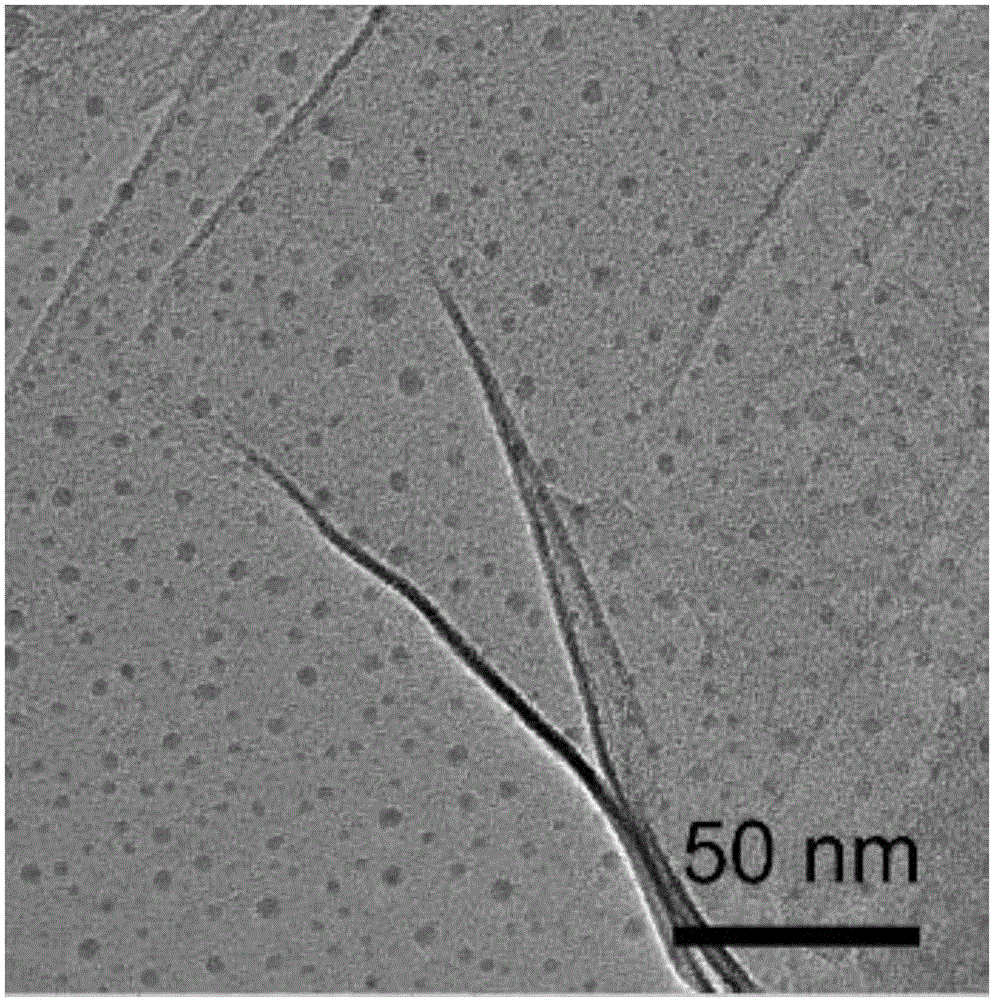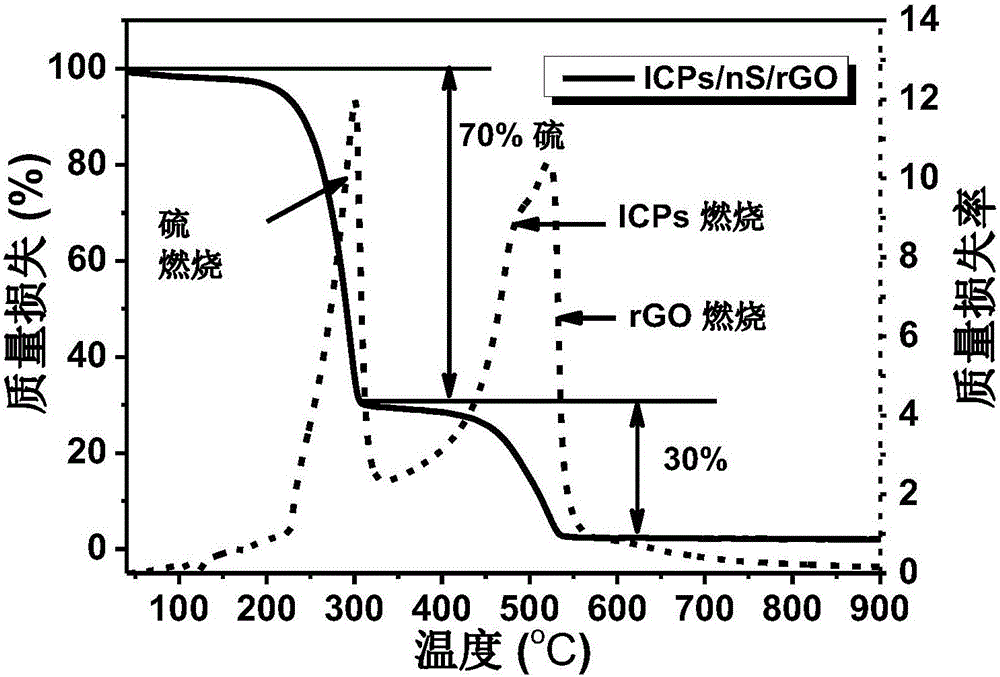Lithium-sulfur battery positive pole material and preparation method thereof
A cathode material, lithium-sulfur battery technology, applied in battery electrodes, lithium storage batteries, non-aqueous electrolyte storage batteries, etc., can solve the problems of complex process, large proportion of inactive substances, and micro-precision control unfavorable for large-scale production, etc. Achieve the effect of low cost, high specific capacity and stable electrochemical cycle performance
- Summary
- Abstract
- Description
- Claims
- Application Information
AI Technical Summary
Problems solved by technology
Method used
Image
Examples
Embodiment 1
[0052] (1) 1.15g zinc and 3.9g sucrose are mixed and ball milled, the ball-to-material ratio is 10:1, and the rotating speed is 300rpm, and the ball mill is 6h, and the resulting mixture is sealed in a stainless steel autoclave in a glove box full of an inert gas, and then the The autoclave was evacuated to below 0.1MPa; the autoclave was heated to 550°C with an electric furnace, and after 8 hours of reaction, it was naturally cooled to room temperature to obtain the reaction product, and the loose part of the upper layer of the reaction product was ball milled at a speed of 300rpm for 6 hours. The obtained material was first washed with dilute hydrochloric acid with a concentration of 0.1M until no bubbles were generated, then washed with deionized water until the pH was neutral, and dried at 100°C for 10 hours to obtain porous nanocarbon flakes; the porous nanocarbon flakes and sulfur The simple substances are mixed and ball milled at a mass ratio of 1:4, the ball to material...
Embodiment 2
[0065] (1) 1.15g magnesium and 3.9g sucrose are mixed and ball-milled, the ball-to-material ratio is 10:1, the rotating speed is 300rpm, and the ball mill is 6h. The resulting mixture is sealed in a stainless steel autoclave in a glove box full of inert gas, and then the high-pressure The autoclave was evacuated to below 0.1MPa; the autoclave was heated to 550°C with an electric furnace, and after 8 hours of reaction, it was naturally cooled to room temperature to obtain the reaction product, and the loose part of the upper layer of the reaction product was ball milled at a speed of 300rpm for 6 hours, and obtained after ball milling The substance was first washed with dilute hydrochloric acid with a concentration of 0.1M until no bubbles were generated, then washed with deionized water until the pH was neutral, and dried at 100°C for 10 hours to obtain porous nanocarbon flakes; the porous nanocarbon flakes and sulfur element According to the mass ratio of 1:4, ball milling is ...
Embodiment 3
[0078] (1) 1.15g zinc and 3.9g glucose are mixed ball milled, the ball-to-material ratio is 10:1, the rotating speed is 300rpm, ball milled for 6h, the resulting mixture is sealed in a stainless steel autoclave in a glove box full of inert gas, and then the The autoclave was evacuated to below 0.1MPa; the autoclave was heated to 550°C with an electric furnace, and after 8 hours of reaction, it was naturally cooled to room temperature to obtain the reaction product, and the loose part of the upper layer of the reaction product was ball milled at a speed of 300rpm for 6 hours. The obtained material was first washed with dilute hydrochloric acid with a concentration of 0.1M until no bubbles were generated, then washed with deionized water until the pH was neutral, and dried at 100°C for 10 hours to obtain porous nanocarbon flakes; the porous nanocarbon flakes and sulfur The simple substances are mixed and ball-milled according to the mass ratio of 1:4, the ball-to-material ratio i...
PUM
| Property | Measurement | Unit |
|---|---|---|
| electrical conductivity | aaaaa | aaaaa |
| thickness | aaaaa | aaaaa |
| diameter | aaaaa | aaaaa |
Abstract
Description
Claims
Application Information
 Login to View More
Login to View More - R&D
- Intellectual Property
- Life Sciences
- Materials
- Tech Scout
- Unparalleled Data Quality
- Higher Quality Content
- 60% Fewer Hallucinations
Browse by: Latest US Patents, China's latest patents, Technical Efficacy Thesaurus, Application Domain, Technology Topic, Popular Technical Reports.
© 2025 PatSnap. All rights reserved.Legal|Privacy policy|Modern Slavery Act Transparency Statement|Sitemap|About US| Contact US: help@patsnap.com



